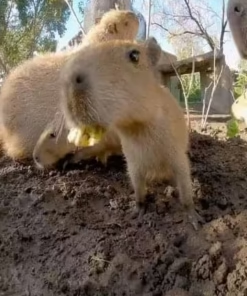Capybaras, the largest rodents in the world, are native to South America and are primarily found in countries such as Brazil, Venezuela, Colombia, Peru, and Argentina. These social animals thrive in warm, wet environments, often residing near rivers, lakes, and swamps. Understanding their natural habitat helps us appreciate their behaviors and needs, whether in the wild or as pets.
Wildlife Conservation: Understanding where capybaras are found is essential for conservation efforts. Many populations are threatened by habitat destruction and hunting, so supporting wildlife protection initiatives can help preserve their natural environments. Captive Care Considerations: For those interested in keeping capybaras as pets, it’s important to replicate their natural habitat as closely as possible. Our store offers a range of products to help create a suitable living environment that mimics their native surroundings, ensuring a healthy and happy life for your capybara.

